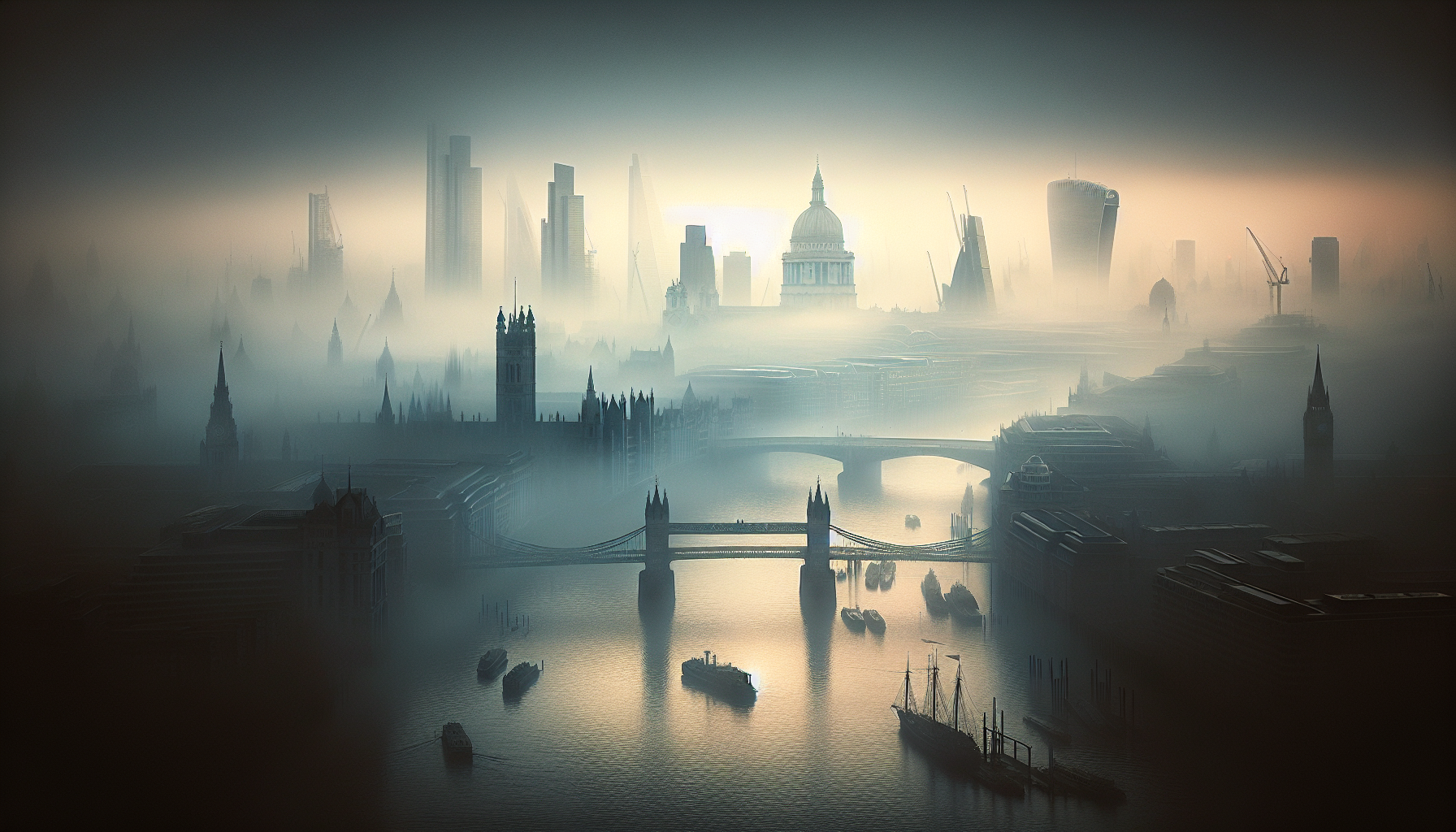Discover the Hidden Beauty in London’s Toxic Fog: Monet and Turner’s Artistic Legacy
In the heart of London, a captivating exhibition titled “Monet and London: Views of the Thames” is currently showcasing how two of history's most revered artists transformed the city’s polluted atmosphere into awe-inspiring art. This exploration not only honors their genius but invites modern viewers to reassess the duality of beauty and despair inherent in urban life.
The Enigmatic Allure of London’s Fog
Imagine waking up to the enchanting sights of London enveloped in a shroud of fog. For Claude Monet, this atmospheric phenomenon was far from a mere weather condition; it was an endless source of inspiration. During his visits between 1899 and 1901, he found beauty in what many viewed as the city’s greatest toxic curse—the omnipresent pollution. Monet luxuriated in the breathtaking play of light through foggy skies, and with each brush stroke, he painted a London that was radiant, albeit veiled in an industrial haze.
As you meander through the Courtauld Gallery, just a stone's throw away from the iconic Savoy Hotel where Monet stayed, you’ll be greeted with a collection of 21 compelling canvases. These works capture the shimmering waves of the Thames and showcase Monet’s vibrant palette of blues, silvers, and fiery hues that underline his fascination with London’s industrial charm.
Monet’s Emotional Landscape
Monet's letter to his wife, Alice, offers a glimpse into his mindset: “Every day I find London more beautiful to paint.” His artistic journey reflects more than just the physical landscapes—the fog serves as a metaphor for the human condition. This dichotomy of beauty amidst pollution resonates profoundly today, where the complexities of urban life continue to mirror such contrasts.
In today’s world, pollution has taken on new meanings; it stirs discussions about climate change, environmental ethics, and urban planning. Monet and Turner invite us to not just observe this beauty, but to contemplate its implications—what does it mean to find beauty in darkness? How do we reflect that in our works and lives today?
Synergy of Art and Activism: Lessons from Monet and Turner
While exploring this idea further, the exhibit becomes an important touchpoint for artists and activists alike. Monet and Turner both illustrate the essential role of artists in confronting societal issues through visual narratives. By embedding pressing themes of pollution and industrialization within their vibrant paintings, they compel us to take action.
Here are some actionable strategies you can adopt for your own creative pursuits:
-
Embrace Your Environment: Like Monet, find beauty in unconventional places. Explore your city and capture the nuances of urban life through your art, dialogue, or writing.
-
Start a Conversation: Use your platform—be it a blog, social media, or exhibitions—to spark dialogue about contemporary issues mirrored in historical contexts.
-
Partner for Impact: Join forces with local art institutions or environmental organizations. Consider using your art for fundraising or awareness campaigns that address pollution or conservation efforts.
-
Create Multi-Media Projects: Leverage modern technology. If you are a painter, consider creating videos or blogs that document your creative process in exploring themes of beauty in adversity.
-
Build a Community: Host workshops that bring together artists and eco-activists. Together, brainstorm how art can evoke a sense of responsibility toward our environment.
Monetization Strategy
To enhance the value of this blog post, consider integrating affiliate links to art supplies, books about Monet’s techniques, or workshops that explore similar themes. Additionally, displaying relevant ads linking to environmental causes or upcoming art exhibitions could foster deeper engagement and encourage readers to take action.
Takeaway
As we stand at the precipice of climate awareness and artistic innovation, the inspiring legacies of artists like Monet and Turner are more crucial than ever. They teach us that within the chaos of fog and pollution lies unparalleled beauty, urging us to examine not only our environment but also the artistic expressions that can bridge the gap between the two. So, next time you encounter a foggy day, whether in London or elsewhere, pause and think—what beauty lies hidden beneath the surface?
For deeper insights and discussions on art, culture, and empathy, make sure to subscribe to our blog and explore our growing library of fascinating articles. Your journey into the world of art starts here!
